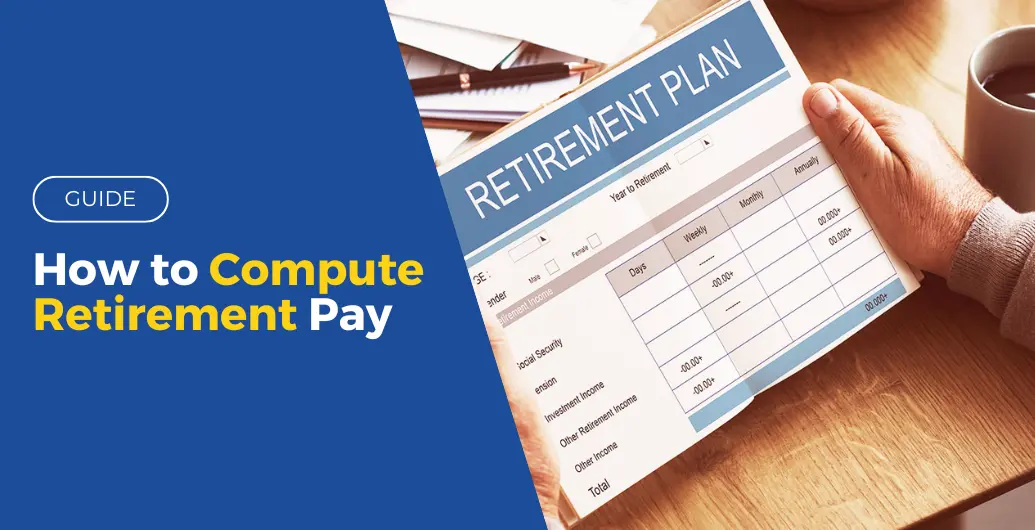Estimated reading time: 4 minutes
The ways on how to compute retirement pay in the Philippines is based on specific criteria outlined in labor laws and regulations. Needless to say, retirement is a significant milestone in an employee’s life, marking the end of their active career and the beginning of a new chapter. It is a crucial aspect of transition, providing financial security to retiring workers.
With that, this guide aims to help employers and employees alike about retirement pay computation and it’s laws, and essential considerations regarding retirement pay in the Philippines.
Table of contents
According to Republic Act No. 7641, in the absence of a retirement plan or agreement, employees who retire upon reaching the age of 60 or more and have served for at least five years are entitled to retirement pay equivalent to at least one-half month’s salary for every year of service. A fraction of at least six months is considered as one whole year.
How Retirement Pay is Computed
The key steps to compute retirement pay include:
- Length of Service: Determine the employee’s length of service, usually measured in years.
- Average Salary: Calculate the employee’s average salary for the last 12 months before retirement.
- Formula: Multiply the average daily salary by 22.5 days (equivalent to one-half month) and then by the number of years of service.
Moreover, employers may also include additional benefits such as service incentive leave and thirteenth month pay. Employers should adhere to the provisions of RA 7641 to ensure compliance with legal requirements.
Also Read: GUIDE: Computing 13th Month Pay in the Philippines
Retirement Pay in Private Companies
In private companies, retirement pay computation similarly follows the guidelines set forth in RA 7641. In the absence of a collective bargaining agreement (CBA) or other applicable employment contract prescribing a different age, the compulsory retirement age for private employees in the Philippines is 65.
Ultimately, employers should ensure that retirement benefits meet or exceed the minimum requirements stipulated by law. Retirement pay is typically based on an employee’s length of service and average salary.
What is Retirement Pay 22.5 in the Philippines?
Retirement pay 22.5, often referred to as “one-half month salary,” is a statutory benefit provided to qualified employees in the Philippines upon retirement. It is equivalent to 22.5 days’ worth of an employee’s average daily salary, calculated based on the last 12 months of service.
The Latest Retirement Law in the Philippines
The latest retirement law in the Philippines is Republic Act No. 7641, which was enacted on December 9, 1992. However, the House of Representatives has passed a bill aimed at reducing the retirement age for civil officials by four years. Currently, civil officials in the Philippines must retire at age 65, with an early retirement option available at age 60. However, if the new bill becomes law, government employees will be eligible to retire at age 56. While workers may perceive this development as beneficial, concerns arise regarding its potential strain on the pension fund for civil servants. As of the time of writing, the bill is pending review in the Senate.
Exemptions of the RA 7641
While RA 7641 applies to most qualifying private-sector employees, it does not cover:
- Government Employees
- Small Employers
- Reasonable Private Benefit Plan (RPBP)
- Special Conditions
- Special Circumstances
Retirement Benefits in Government Service
Meanwhile, public servants and workers in government service are entitled to retirement benefits if they have served for at least 15 years and retire at the age of 60. The payment and settlement of pensions, incentives, and other retirement benefits funds for retiring government employees are given top priority.
How Much is Retirement Money in the Philippines?
As mentioned, retirement money in the Philippines varies depending on the length of an employee’s service and their average salary. As per RA 7641, retirement pay is calculated as one-half month’s salary for every year of service, with a fraction of six months counted as one whole year.
Additional Considerations
- Inclusions: Retirement pay may include components such as fifteen days of salary based on the latest rate, cash equivalent of service incentive leave, and one-twelfth of the thirteenth-month pay.
- Exemptions: Retirement benefits received under RA 7641 and certain private benefit plans are exempt from income tax, subject to specific conditions outlined by the Bureau of Internal Revenue.
Conclusion
Understanding the retirement pay computation and its associated laws is essential for both employers and employees in the Philippines. Adhering to legal requirements ensures financial security for retiring employees; employees can then plan their retirement confidently.
Keep Reading: GUIDE: How to Apply for a Housing Loan in SSS

Leave a Reply